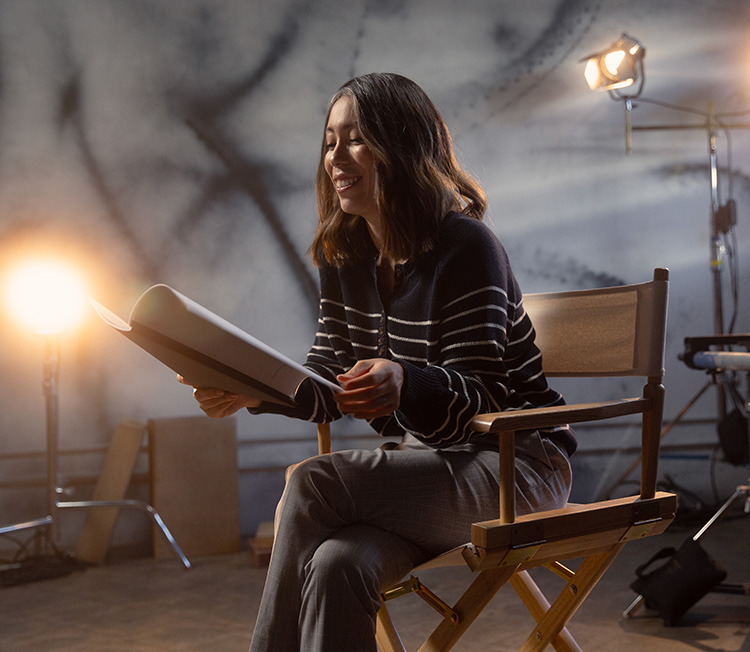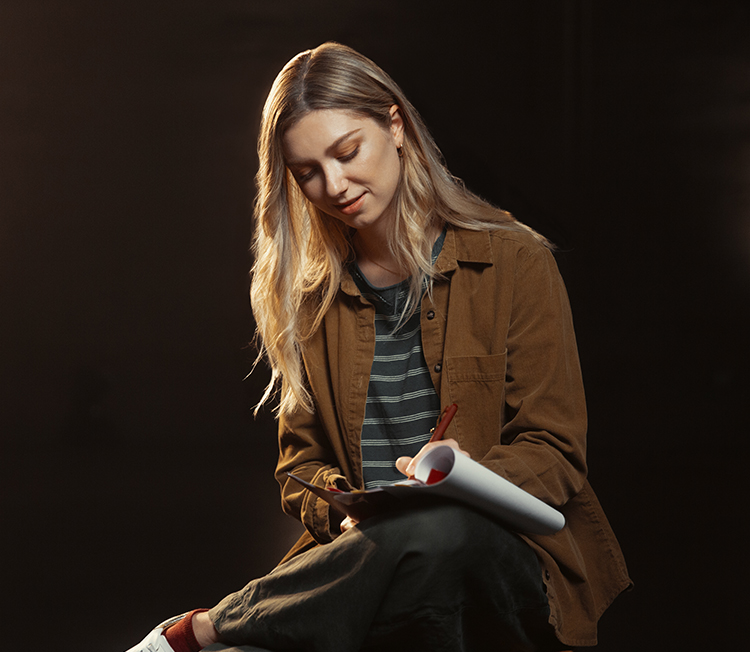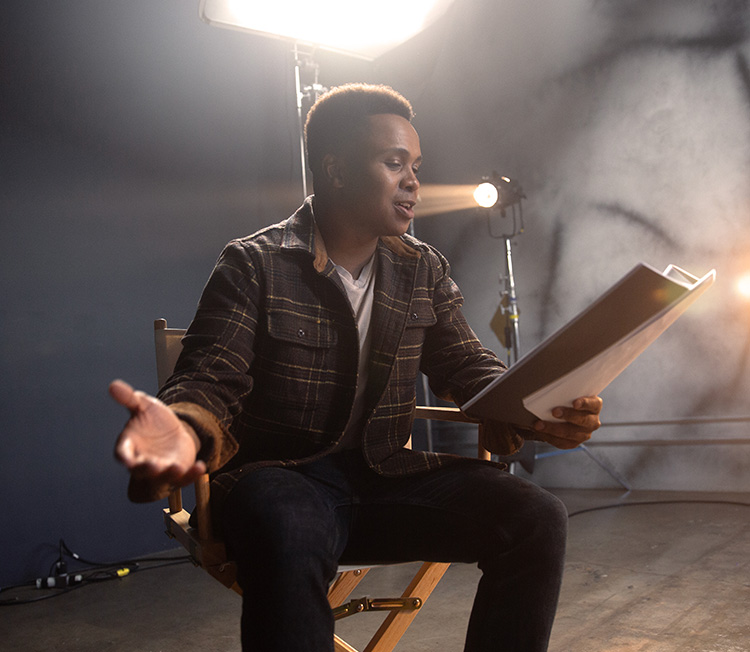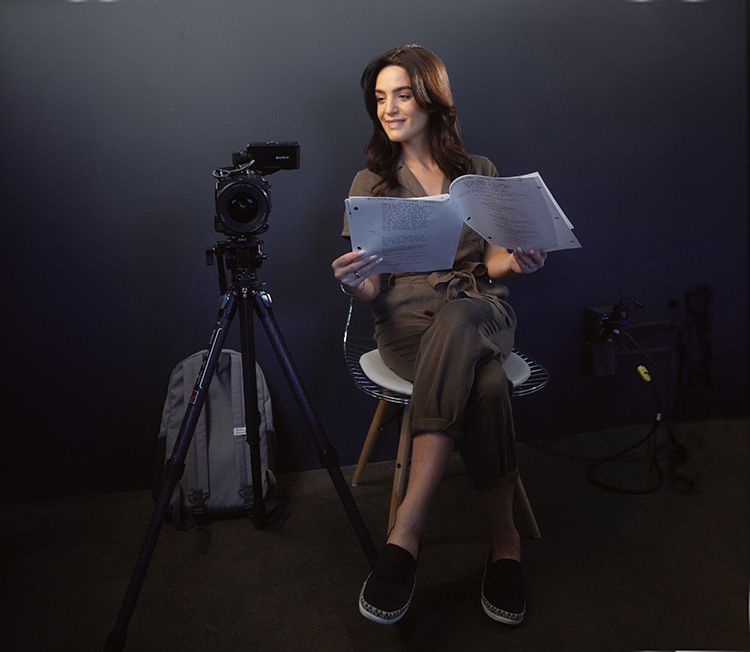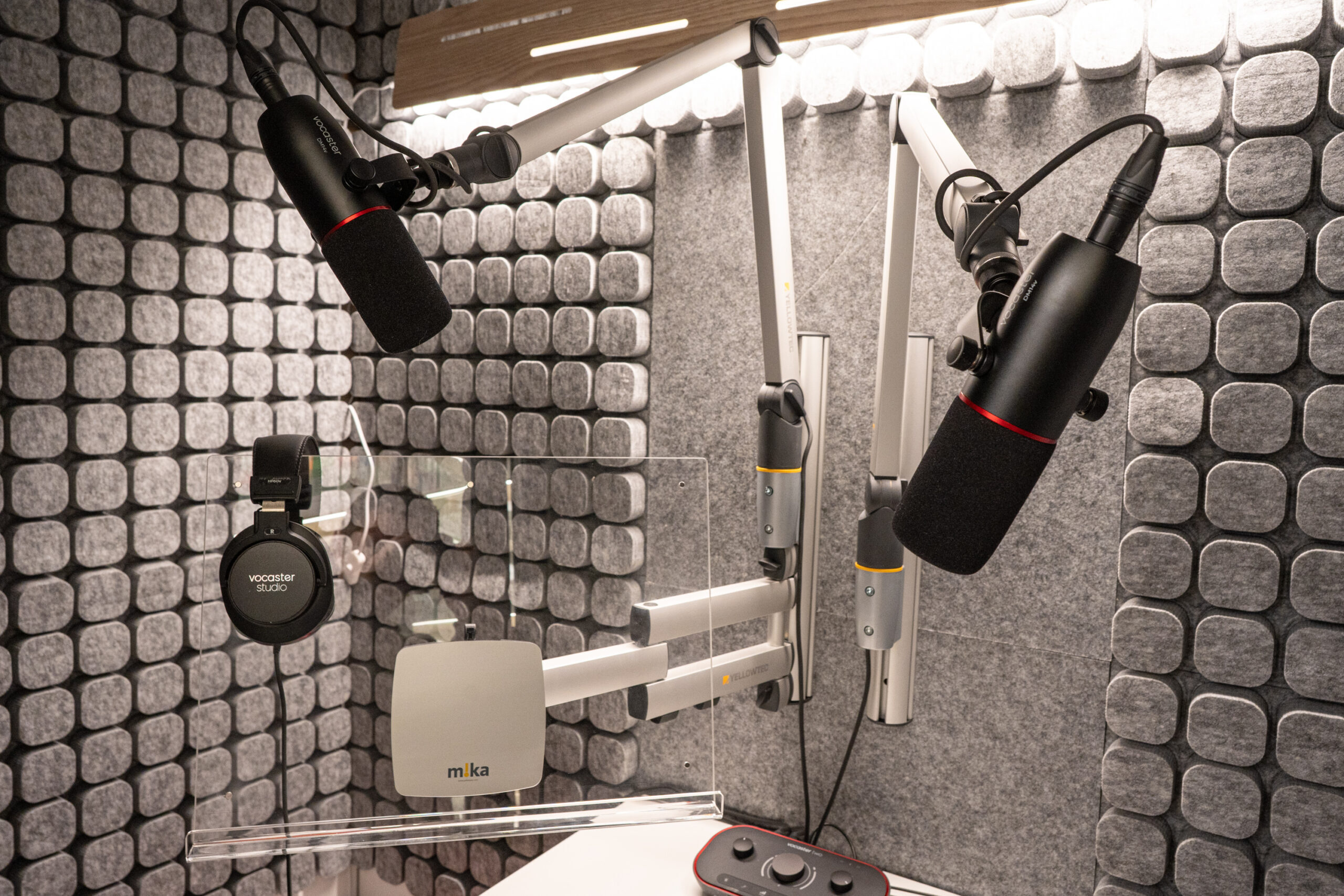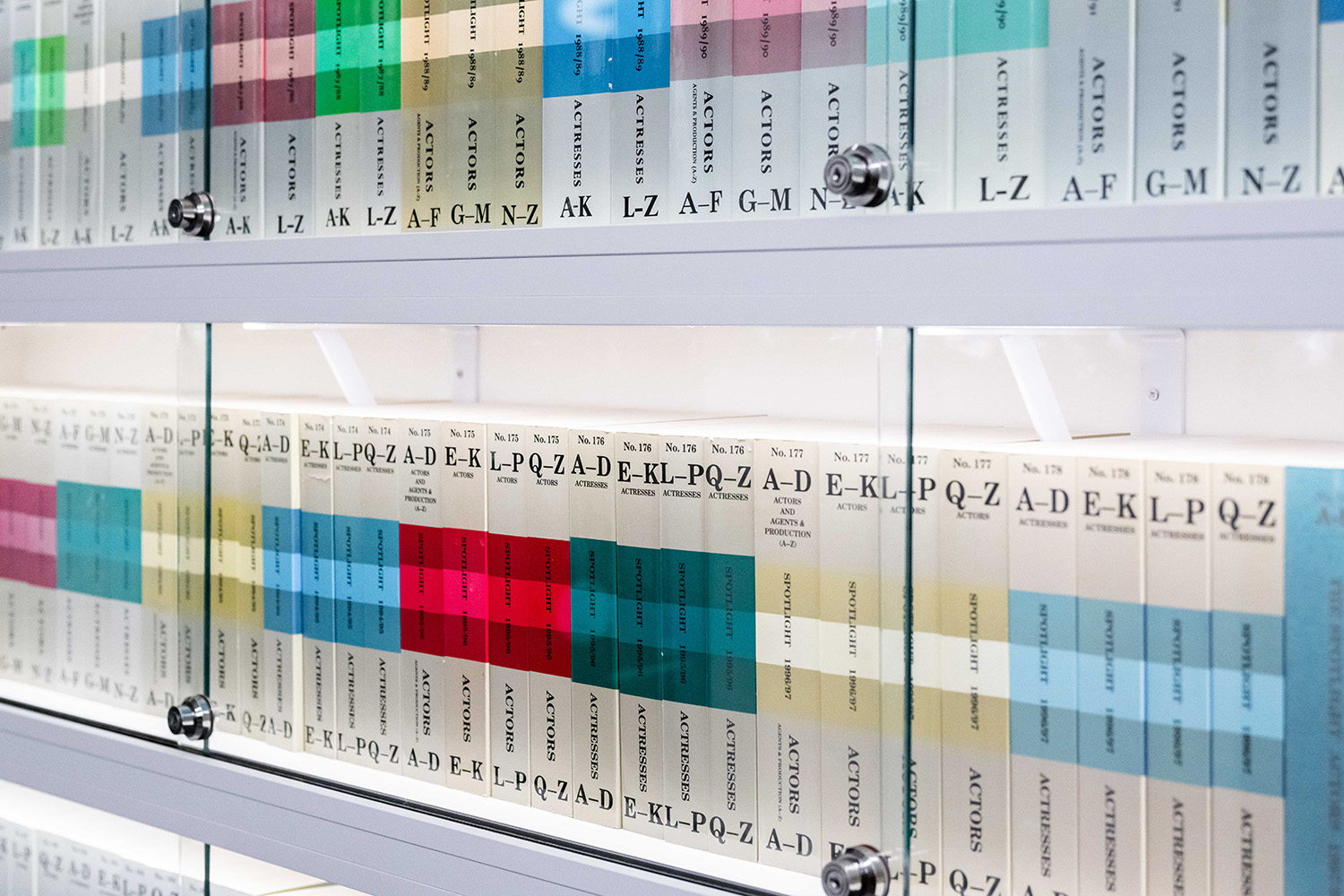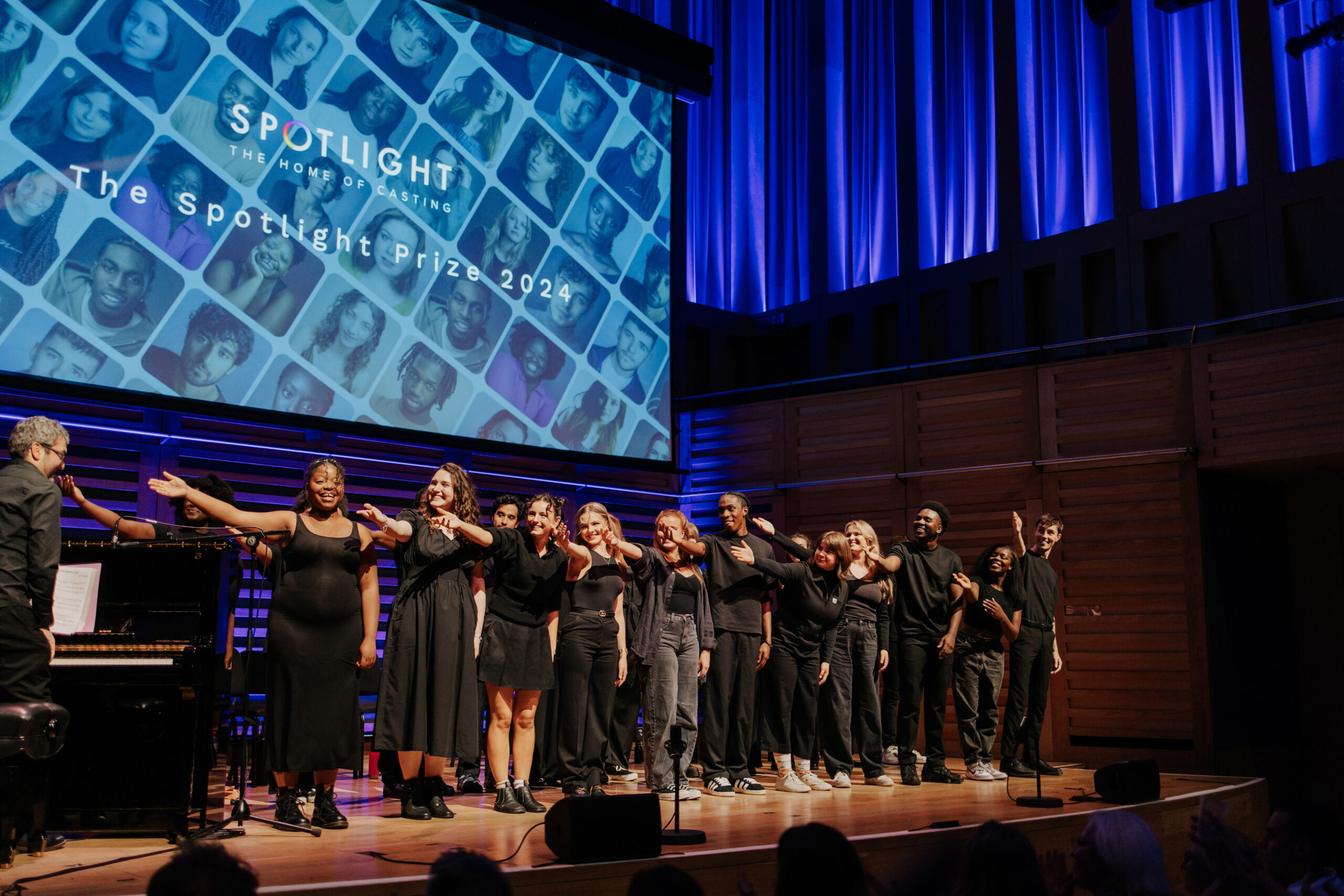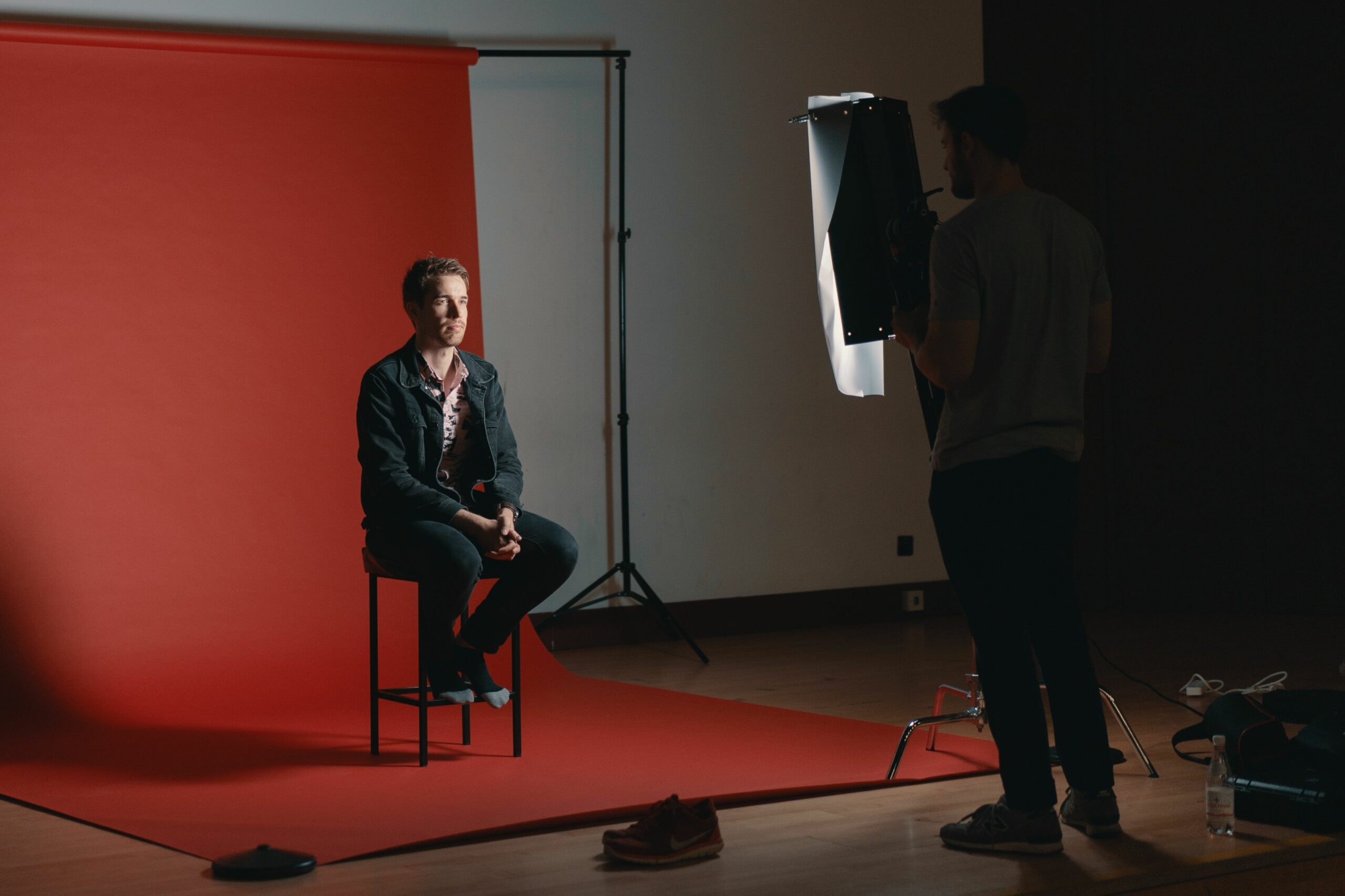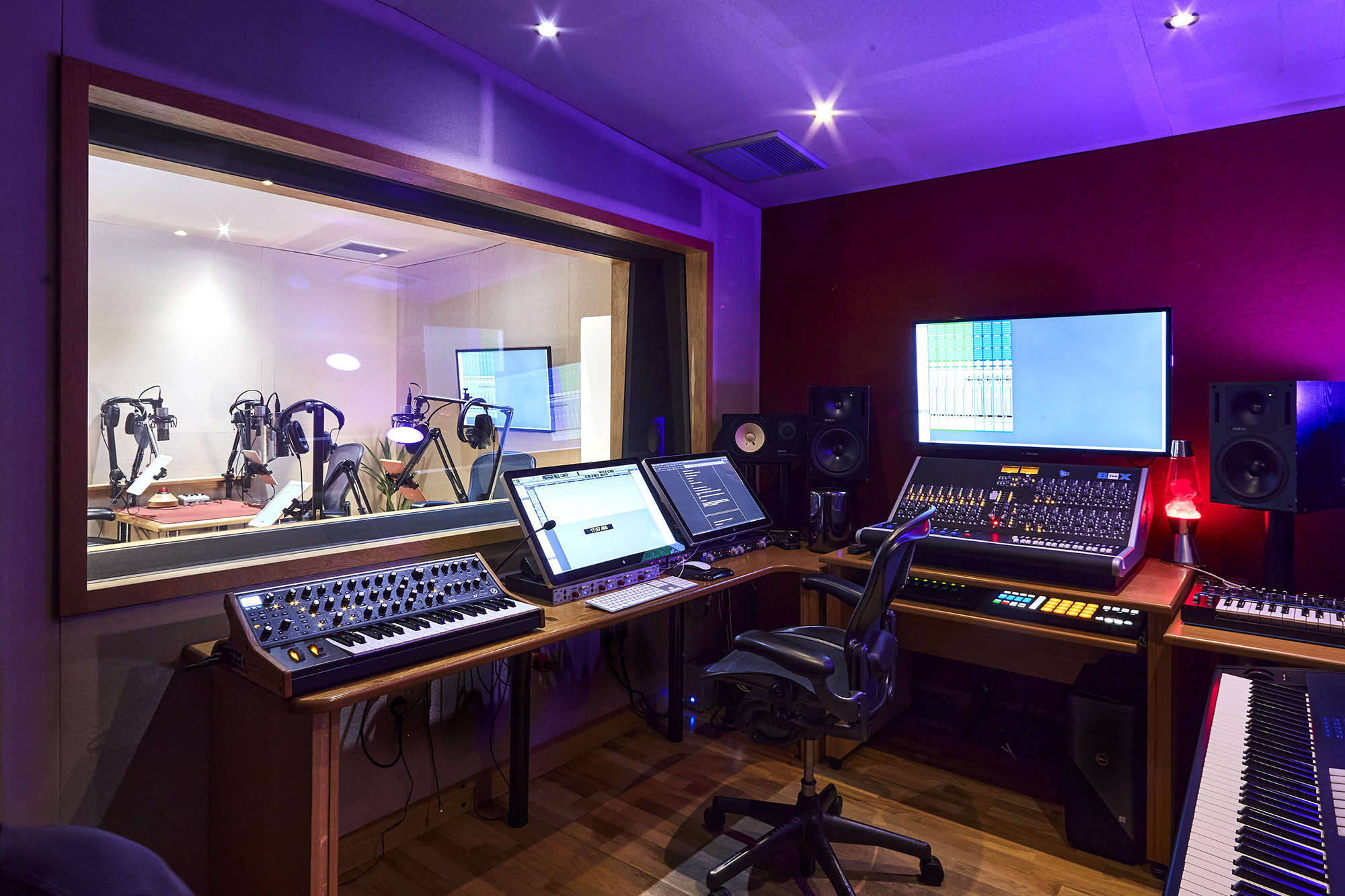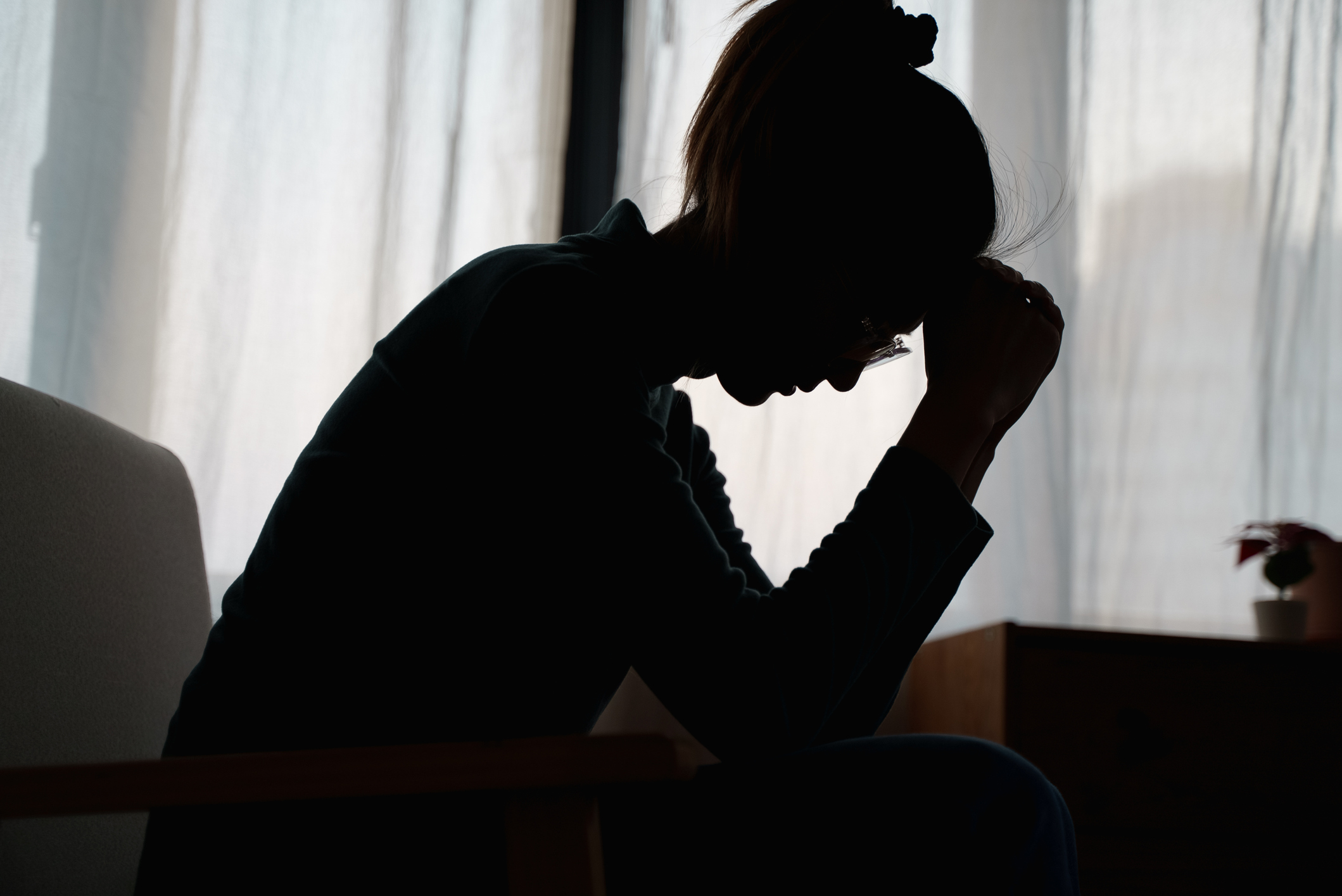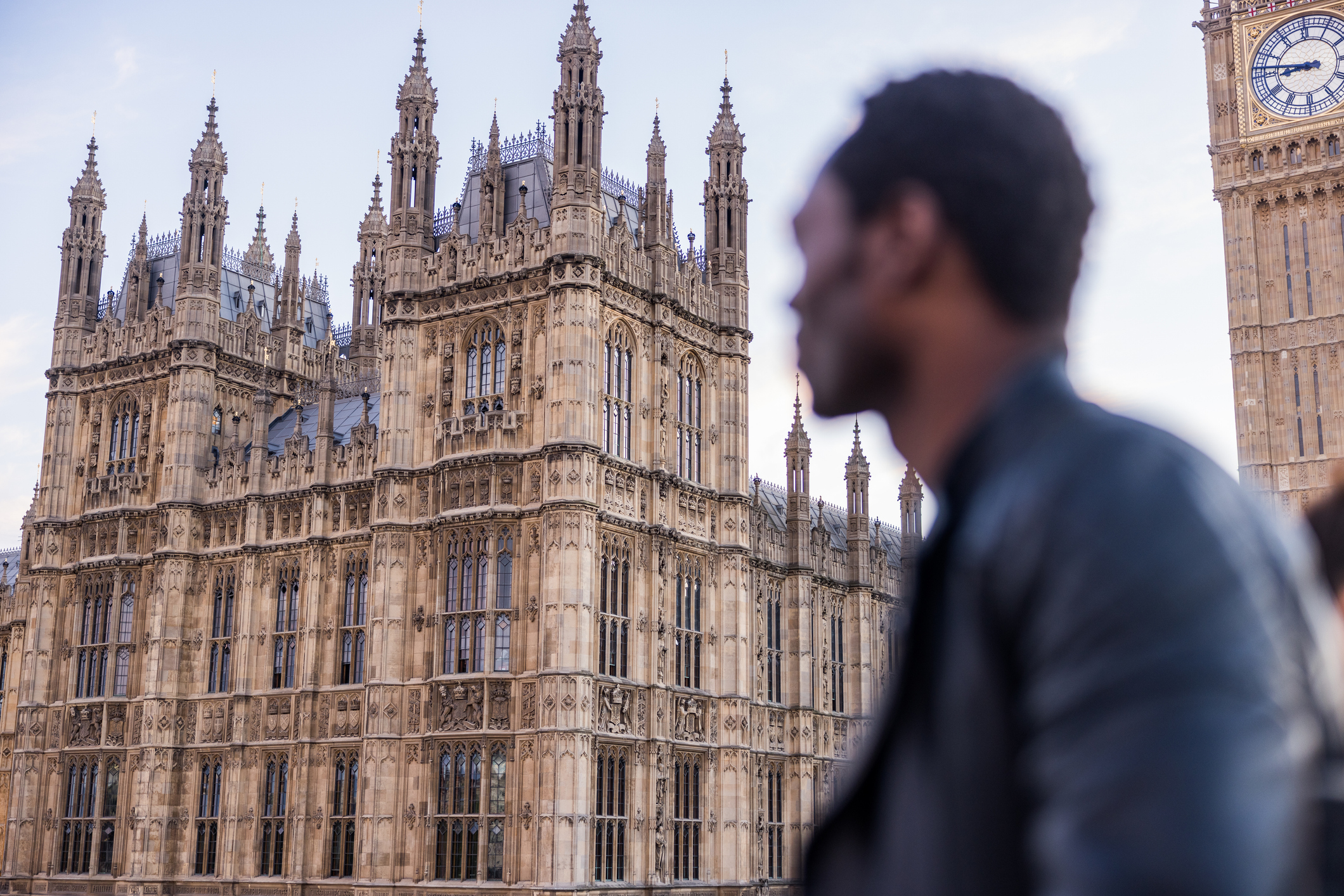Spotlight’s Head of Publishing gives her expert advice about picking the most effective photos for your profile.
The headshot is vital for every actor but what kind of photos make for the best first impression when it comes to your Spotlight profile? In this episode of The Spotlight Podcast, we discuss the subject with Kate Poynton, our Head of Publishing who has a wealth of experience and knowledge in this area.
Kate shares her advice about what you should (and shouldn’t!) include on your Spotlight profile, what to consider when you’re selecting your photos and whether it’s important that the photos be taken by a professional.
By the end of the episode, you will have some practical tips to help make your Spotlight profile.
20 minute listen.
All episodes of the Spotlight Podcast.
Episode Transcript
Christina Care: Hello and welcome to this episode of The Spotlight Podcast. Today we’re answering the question: what makes for a good actor’s photo? This is all about what pictures you choose to present yourself with professionally so that you can capture the casting director’s attention in a good way. My name is Christina Care, I’m the content manager at Spotlight and today, to help us answer this question, we have Kate Poynton, who is our Head of Publishing.
Kate Poynton: Hello there.
Christina Care: Hi, Kate. Let’s start by talking about you for a second. What is your history with Spotlight?
Kate Poynton: Gosh, it’s a long one. I joined in the summer of 1985. Can you believe it? So I’ve been here a long, long time, working my way up from editorial assistant right the way through the editorial department to assistant editor, deputy editor, editor, Head of Publishing. So, been there, done a lot of things.
Christina Care: Seen a lot of pictures.
Kate Poynton: Seen a lot of pictures, yeah.
Christina Care: Because, of course, you worked on the books when we still published books.
Kate Poynton: Absolutely, yes.
Christina Care: So obviously, one thing that people might not realise about Spotlight is that we have always looked at our pictures in-depth. We’ve always paid a lot of attention to what people submit.
Kate Poynton: So closely.
Christina Care: And that’s still the case even though we’re all digital now.
Kate Poynton: Absolutely.
Christina Care: So, that kind of falls under the publishing team.
Kate Poynton: That’s right.
Christina Care: Can you tell us a bit about what they do?
Kate Poynton: So, our publishing team are a dedicated bunch of fanatics about getting everything right. I share my longevity with several members of the team. So, apart from my 30 odd years of experience, we’ve got 70 plus years of experience in the team.
Christina Care: That’s a lot.
Kate Poynton: Yeah. Photographs is what we do. Profiles is what we do. The team worked almost exclusively on books, when we had books, and a bit on the web. Now that we don’t have the books, we work exclusively on the website. So we’re looking at profiles, in particular photographs, every day. We’re looking at Contacts – our new area of the website – and our content, which is another area that we’ve started very recently and are developing hugely.
Christina Care: Thank you for mentioning that. One thing I wanted to mention there is, obviously, as a byproduct of having that team it means that everything that a performer submits gets seen by somebody, which is kind of the basis of us having this conversation.
Kate Poynton: Yes.
Christina Care: So, I think a good place to start might be just to ask, what kind of photos do you think an actor should include on their profile? Because, obviously, we talk a lot about the headshot, but there’s lots of other kinds of photos you could include as well.
Kate Poynton: Yeah. I mean, I think the headshot and that format is the very best one that you should put on your profile. I think doing full body shots or production shots are nice but not essential. So, I think people really should concentrate on the headshot. We get a huge variety of photographs come through. On average 800 to 1000 are uploaded a day to the site.
Christina Care: Wow. That’s a lot.
Kate Poynton: Our team look at every single one of them. Just looking at the figures for yesterday, we had 1,118, and on the day before, 993. So, we have a particular focus on those because those are the things that are the first visual impact for a casting director. They’ll look at your profile later, click on it and read more about you, but if they’ve not been engaged by the picture, then they’re not going to go any further.
Christina Care: Absolutely. It’s the first thing that a casting director sees. It’s the first impression.
Kate Poynton: Yes. It’s really, really important. So, I think always put the photographs that you can… the best you can afford is the best advice. Using a professional photographer, I would always try and advise. That’s not always possible, we do realise that.
Christina Care: Yeah, absolutely.
Kate Poynton: But I think it’s something you should aspire to. If you’re a professional actor, you should have a professional headshot to put forward. It’s an investment and you do need to do it every couple of years. But if you haven’t changed too much, then you don’t need to worry about it. It’s not a two year diary calendar thing where you have to say, “I’ve got to change my photo now.” But do check in with your profile regularly. Not just to update credits, but just to have a quick look at the profile as you see it for the first time. Just imagine you’re the casting director seeing it and thinking, “Wow, is this really doing it?”
Christina Care: Yeah, absolutely.
Kate Poynton: “Do I need to change that picture? Do I need to get rid of that one? Do I need to move the order around if I’ve got several of them there?”
Christina Care: I think that’s one of the most common things as well, just to pick up on your point there, that casting directors say to us when they come in is that the number one thing that annoys them is if that photo is not accurate for that person.
Kate Poynton: Yes.
Christina Care: So really, it’s not just presenting yourself truthfully, but also what kind of actor you are.
Kate Poynton: Yes.
Christina Care: So, there are quite a few things to consider there.
Kate Poynton: You anecdotally hear all these awful stories of casting directors calling people into the room and not really knowing who it is that’s walked through the door because that’s not what they saw on the headshot.
Christina Care: Yeah.
Kate Poynton: Back in the day when we had paper renewal forms, people were bringing hard copies, I can completely sympathise with that, where somebody would stand in front of me with a photograph and I’d go, “Well, who is this?”
Christina Care: “That’s not you.”
Kate Poynton: “It’s not you.” Yeah. What you’re saying, it’s very much about being an honest image of yourself. If you’ve got wrinkles, that’s fine-
Christina Care: Yeah, absolutely.
Kate Poynton: … because they’re not going to go away and you could lose out on work because they want you to look like that.
Christina Care: Yeah, absolutely.
Kate Poynton: It’s not your ideal of what you should look like, it’s what you do look like.
Christina Care: I think that’s a really good point. So, if you are looking to get some photos done professionally, where should a performer start?
Kate Poynton: Well, there’s Contacts online, which is part of the Spotlight website. So if you go to our homepage, you’re able to click on that, and you’ll see listings for hundreds of photographers. There’s also the APHP, which is the Association of Professional Headshot Photographers. That’s a bunch of photographers who formed a few years ago. They’ve a kind of code of conduct and they are very, very experienced in the headshot arena. So, that’s worth checking out as well.
Christina Care: A good place to look.
Kate Poynton: Yeah, absolutely.
Christina Care: So, what are the kinds of qualities then that make for a particularly good photo that you should upload as opposed to one that… I mean, obviously if you get a professional photo, they’re going to be able to help you through that process.
Kate Poynton: Yeah.
Christina Care: But if you are taking photos yourself, there are things that you might not realise that you’re doing.
Kate Poynton: Yeah, I think eyes to camera, so not looking away. Not looking down. Definitely don’t have any kind of fussy props or your hands in shot, kind of resting on the table with both hands cupping your chin. It’s not a good look. It’s not great. I think a neutral, unfussy, simple photograph. One of our mottoes within our team is, “Simple and gorgeous.” So, just keep it real. You can put different images up of you dressed differently, with different tops, different hairstyles, beards, no-beards, all of that. But just think really carefully about a casting director looking through sometimes hundreds, and occasionally thousands, of profiles.
Christina Care: Yeah, absolutely.
Kate Poynton: Their eyes can only take in so much so you need to be impactful immediately and just keep it simple and gorgeous.
Christina Care: Very good advice. And yeah, it is our motto in the case of how we look at photos. I wonder if there’s anything you could say in terms of the way people frame a shot, or are there other very basic things that perhaps people miss when they’re uploading?
Kate Poynton: Yeah. I mean, I think it does happen with some photographers occasionally, but not very often. It’s the framing. So, that 10 x 8, or that 10 by eight or five by four ratio is the one that you kind of need to stick to, and using what we call a rule of thirds, where your eyes are a third of the way down. You don’t want to upload a photograph of you with acres of space above your head because what you’ve got to remember is that for, well, pretty much all the time, your agent, when they’re submitting you, the casting director, when they’re receiving the submissions, they’re looking at you in a grid format. So, if you’re peeping up from the corner of something, then you’re kind of too small to see. You’ve disappeared. You’re not making as big an impact as somebody who’s got a nicely cropped photograph. There’s a balance between too close-
Christina Care: Right.
Kate Poynton: … but you don’t want too much space around it. But again, you go back to the eyes. The eyes need to be the thing that people are really concentrating on. Yeah. Then I think lighting is something that you need to think carefully about if you’ve not had it taken by a professional photographer. Something that’s too dark, something that’s overly bright or just kind of really blown isn’t very good. Moody photographs, definitely not. We sometimes see photographs of people kind of in half shadow and you have to try and imagine what the rest of their nose and their right eye looks like.
Christina Care: It’s much better if you just are completely visible.
Kate Poynton: Yes, absolutely. Then in terms of format, again, landscape is fine. Mixing it up just to make it a little bit different. If you’re needing to crop an image where you’re cropping somebody out and it’s tall and thin, again, think about how that’s going to look in a grid. If it’s long and narrow, in the opposite way. Yeah, just always think when you’re uploading it, “How is a casting director going to see me?” Don’t look at it like you would your social media profile-
Christina Care: Right, exactly.
Kate Poynton: … “Oh, that looks really good, and my mum would like that.” It’s what the casting director is going to see each time they alight on your profile.
Christina Care: Absolutely. So, obviously we get a whole variety of different kinds of photos that do come our way. What are some things that we kind of advise against versus the things that we really cannot allow you to put on your profile? Because there’s a difference there, obviously.
Kate Poynton: Yeah.
Christina Care: There’s some things we just prefer people didn’t do because obviously we want you to succeed. We want you to present yourself in the best possible way.
Kate Poynton: Definitely.
Christina Care: That’s kind of the Spotlight mission, to help you on your journey. But then there are other things that we just really can’t allow. What’s the difference?
Kate Poynton: Yeah. I mean, there’s a kind of mixture. There are things that we wouldn’t advise. So blurry, pixelated photography doesn’t look good. Amateur photography is not great. Don’t try and enlarge pictures yourself if you don’t know what you’re doing because they’re going to end up looking really, really, really dreadful and we’re going to say no. Selfies, we get a lot of selfies. They’re absolutely fine if you think about the background that you’re doing and you crop them.
Christina Care: Right. The background seems to be an issue.
Kate Poynton: Yeah, absolutely. I mean, if you’ve got a tree growing out of your head, or you’ve taken it in the bathroom and we can see your toothbrush. No.
Christina Care: Not right.
Kate Poynton: If you’re taking it in your front room and we can see the door frame or the door handle, none of these are professional images.
Christina Care: Exactly. I think it was in an earlier podcast that we did with our audio visual specialist, Nick, who commented that if you have those distracting things in the background, that’s exactly the problem with them, is that the casting directors will look at those things-
Kate Poynton: Yeah. And go, “Oh-”
Christina Care: … rather than at you.
Kate Poynton: … “Those are nice taps.”
Christina Care: Exactly.
Kate Poynton: I think the other thing is too much skin showing. So, it’s difficult now that we don’t do the books. People upload a different type of photograph than they might have done previously. Because, when we did the books, people knew that it was there forever, and certainly for that next year before they were able to change it. So, yeah, it’s changed. And also with the type of performer, I mean, if you’re in musical theatre or you’re a dancer, then you’re more likely to put a different type of photograph up and that’s absolutely fine. But again, think about what you’re saying to the casting director looking at you. Just have a really careful look at that. I think overly photoshopped photographs are not great, and I don’t just mean tweaking colour tones or whatever, but adding butterflies or-
Christina Care: Oh, right. Snapchat filters.
Kate Poynton: … Snapchat filters in the background, it’s not Spotlight.
Christina Care: It’s a bit odd.
Kate Poynton: It’s not Spotlight. That’s for Instagram. Photographs of you at events or on the red carpet. It’s fine to send to your mum or your granny, but all the casting director doesn’t care, I wouldn’t think, that you were standing in front of something saying whatever event it is, and you’re in a suit and tie or a rather lovely dress. That’s not you, that was you on that event.
Christina Care: Right.
Kate Poynton: Shots on set also I find problematic because do we really want to see what the camera man looked like?
Christina Care: Oh, I see, like behind the scenes sort of shots.
Kate Poynton: Yeah. And it’s lovely. It may be your first film and you’ve been very proud of it. But again, I think those are snaps that you keep for yourself.
Christina Care: Yeah.
Kate Poynton: A casting director knows what happens on a film set. They know that there’s a camera operator and there may be a big boom microphone in the shot. That’s lovely for you to keep as a memento, but I don’t think it’s for Spotlight. Photographs with animals, your dogs, your cats, we get. I mean, if there’s been a specific breakdown out for you and your dog, then fine. But other than that, not really. I suppose posters and print advertorials are problematic for us. Not only because they don’t look good, because a lot, well, most of our photographs are seen in thumbnail form now, so you couldn’t read them anyway, but they also kind of verge on copyright.
Christina Care: Right. So, that’s a kind of a big thing.
Kate Poynton: Yeah. But my biggest no-no, and it’s an editorial decision I kind of made early on, is around guns and weapons.
Christina Care: Of course.
Kate Poynton: I think there’s enough knife and gun crime around that we don’t need to glamorise violence.
Christina Care: Absolutely.
Kate Poynton: I think if it’s in the context of a production shot, so if you were genuinely holding or wielding a sword on stage-
Christina Care: Right, it’s that you were playing that part.
Kate Poynton: You were playing that part, but you standing with a knife or a fake gun or two fingers in the air as if it’s a kind of gun, it’s not necessary, and casting directors can imagine what you might look like with a sword or a gun in that. They’re professional casting directors. You don’t need to suggest these things to them.
I think the other thing, describing all your photographs. We give you the ability to describe a photograph. That’s only if it’s a production still or a stage still, you need to say you were Hermia in A Midsummer Night’s Dream or whatever. But you don’t need to say, “Me in a stripey top.” You don’t need to say, “Me with red hair. Me with…” I don’t know, “white shirt on,” or label them headshot one, two or three, because it’s pretty much obvious.
Christina Care: Yeah, it’s self-explanatory.
Kate Poynton: Exactly. But yeah, I think the biggest thing for us is copyright.
Christina Care: Yeah.
Kate Poynton: Just as professional actors expect to be paid, and honoured, and respected for their craft, so do professional photographers.
Christina Care: Of course, yeah.
Kate Poynton: The Copyright Act of 1988 states that just because you are the subject of the picturer, you’re not the owner of the picture anymore. It belongs to the photographer who took it, whoever that is, a professional or anybody else.
Christina Care: So, that tends to be a common thing that we get in terms of copyright infringement. So, it’s a common way that we have that issue-
Kate Poynton: Yes.
Christina Care: … which is that someone’s obviously cropped it out of perhaps a contact sheet or something similar.
Kate Poynton: Or even left it in.
Christina Care: Right.
Kate Poynton: So, we will often see a photograph with, “Copyright,” I’ll just use my name for the moment, “Kate Poynton,” embedded across the bottom of the photograph or, it will say, “Proof copy only,” right across their face. So, we kind of know then that you have not used the original file that you’ve paid the photographer for. You may have snaffled it from a website, a link that they’ve sent you of your contacts, or you’ve captured it on your tablet or phone and just kind of done a screengrab of it. And it shows. We know, and we’re not going to publish those. We’re going to remove them. It’s the law and you have to pay for the image.
Christina Care: Right.
Kate Poynton: Sometimes we will also suspect if people wrongly attribute the credit to somebody else. So we’ll know, “Oh, that photographer did that, that doesn’t look like a so and so’s photograph. Have they either made a mistake or made it up?” It will just set some things in motion and we would pursue that.
Christina Care: Right.
Kate Poynton: I mean, we don’t take a lot of photographs down. We will query things with people. The thing to remember, which does get quite confusing, is that all our photographs go live the moment you upload them. We check them retrospectively, so we try to keep up. But with the figures that we’ve got we’re sometimes days behind.
Christina Care: Right.
Kate Poynton: But we do look at everything.
Christina Care: Yeah, absolutely. So, I think just to kind of summarise, you don’t actually need that many photos on your profile.
Kate Poynton: No, no.
Christina Care: So, perhaps it’s good to just focus on those few very good professional photos. If you’re kind of limited by money and time, that’s a good place to focus.
Kate Poynton: Definitely.
Christina Care: And any of those other sorts of photos that are more, I guess, for your own memories, those belong somewhere else and not your acting profile.
Kate Poynton: Yeah, absolutely.
Christina Care: Okay. I kind of want to finish with a sort of different question, which is that in all your years looking at photos, were there any that, for you, really stood out as memorable?
Kate Poynton: Yeah, I have got a couple of favourites, actually. I mean, we’ve got a beautiful archive going back to 1927, and you can look at all the different types of photography from the ’20s, the ’30s, the ’40s, the ’50s, the ’60s.
Christina Care: Absolutely.
Kate Poynton: They’re very of their time and that’s a lovely memory to have. There are two that always stuck out. Well, there’s a couple of things. I mean, Peter Sellers, and Eric Sykes, and John Cleese always tried to do silly things or amusing things when we had the books. Those are always lovely to look at. So, we’ve got people dressed as kangaroos, or Queen Elizabeth the first or lots of different things.
But my particular favourites are, there’s an image from the 1999 edition of Timothy Spall by Quentin Wright. I talked earlier about not cropping too closely, but this one is a really, really, really close crop. But the eyes are in that rule, and he looks stunning. It’s just beautiful. It captures his essence and you want to know more about him.
Then there’s another one of the now late Fenella Fielding from the 1993 edition by Robin Beeche, which is a landscape shot. It’s just so characterful and playful, and it’s just suggestive of… she had a beautiful voice.
Christina Care: Right.
Kate Poynton: You could just imagine her just about to open her mouth and say something in those glorious tones that she had. Again, it was the eyes looking at you. So, those are my two favourites.
Christina Care: Oh, those are lovely. Well, thank you so much, Kate. I think we have truly answered this question in our podcast today.
Kate Poynton: Thank you.
Christina Care: I want to say that if anyone does have any other questions, they can email us at questions@spotlight.com or give us a call.
We have lots more advice and tips about headshots available. If you have anything you’d like us to cover in a future podcast, please email questions@spotlight.com or send us a tweet @spotlightuk.

